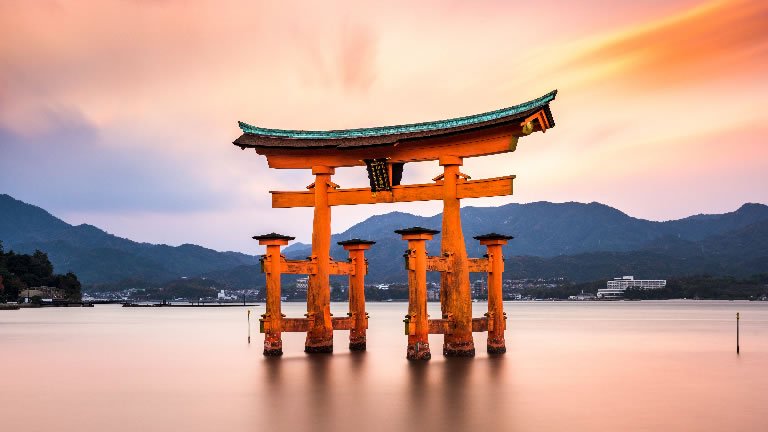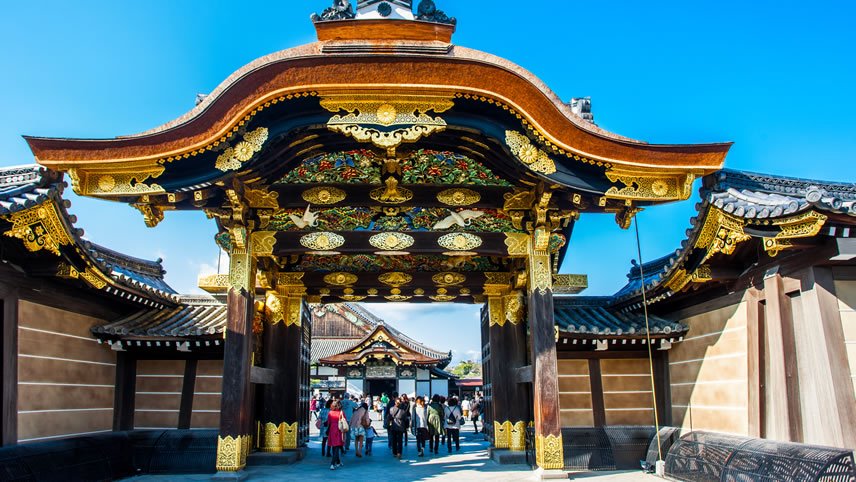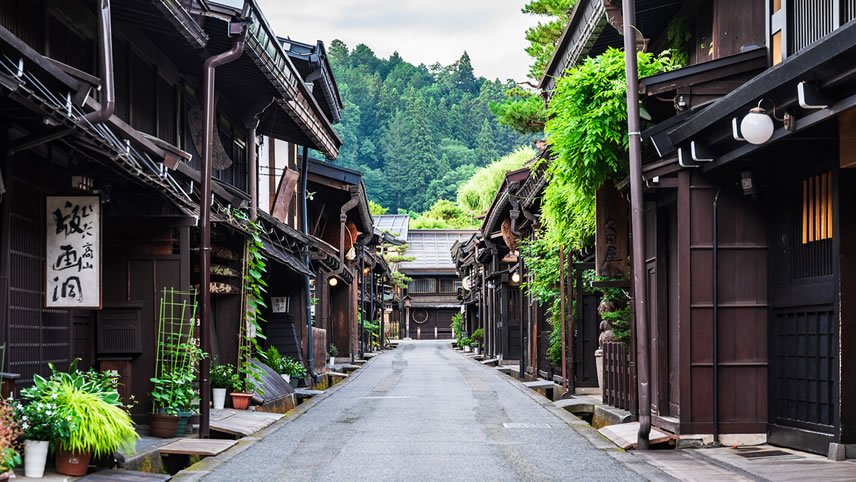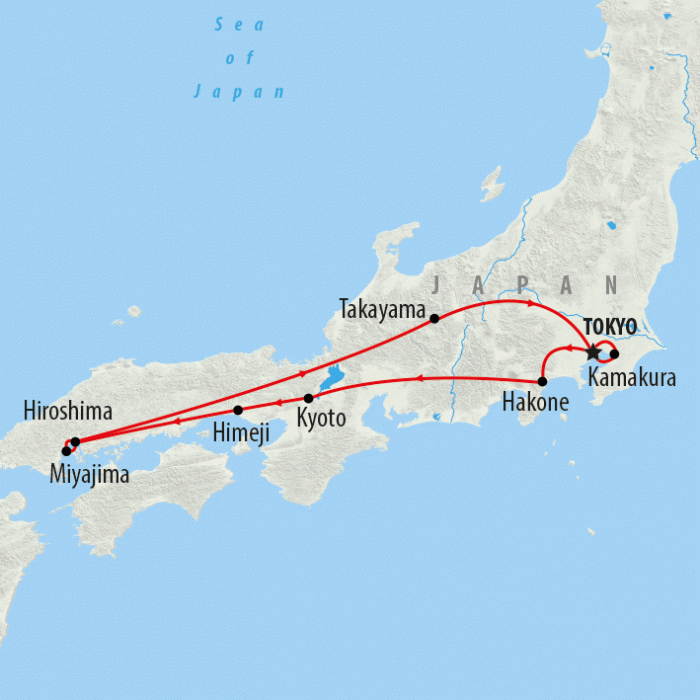Overview
Itinerary
Upon arrival to Tokyo you will be met at either Narita or Haneda International Airport by your guide. Travel by train into the heart of the city and check into your hotel. The rest of the day is free to spend at your leisure.
We recommend arriving before 3pm on this day, as there will be a Welcome Meeting at 6pm, where you will meet your guide and the rest of the group.
This morning we take the subway to Asakusa, a lively district of Tokyo which is famous for its historic Sensoji Buddhist temple. After visiting the temple we'll have time to explore the area which has an abundance of interesting souvenir and craft stalls.
This afternoon we head to Harajuku, which is a mecca for young and fashionable Tokyoites who flock to the trendy shops and cafes on Takeshita Street. Here, we'll visit the revered Meiji Shrine where the emperor Meiji and his wife are enshrined.
Our last stop of the day is the famed Shibuya Crossing - regarded as one of the busiest pedestrian crossings in the world. 'The Scramble' as it's known is an amazing spectacle as people come from all directions at once – sometimes over a thousand with every light change – yet they still manage to duck and weave without causing collision. Here, we'll grab a coffee and perch ourselves on a barstool at Starbucks to watch the spectacle.
This evening offers free time, though if travelling during May and September you might like spend the evening watching a Sumo tournament (bookings must be made in advance). See our Trip Notes for more information.
Today we head out of the city to Kamakura, Japan's first feudal capital, which is just an hour from Tokyo. Here, we'll visit the iconic bronze Big Buddha and the Zen Temple of Hokokuji with its towering bamboo garden where you can drink tea and learn about tea ceremony's, before walking the cobbled pedestrian alleys - adorned with locally made items. Return to Japan's bustling capital for the night and tonight we'll organise a Shabu Shabu (a traditional Japanese hot pot meal) for those who are interested.
Today offers a guided tour of the Tokyo National Museum, housing a number of exhibitions from galleries to Japanese archeology. The Tokyo National Museum is located in Ueno Park, a large public park within central Tokyo and famous for a number of museums held within it's grounds. The remainder of the day offers free time to independently explore.
This morning we travel by highway bus to Lake Kawaguchi, located at the foot of Mt Fuji in the Fuji Hakone Izu National Park. The scenery is stunning with panoramic views of a snow-capped Fuji most of the year.
Upon arrival, we'll travel along the Mount Fuji Panoramic Ropeway and visit the observatory. For tours staying at Lake Kawaguchi between 15 Apr – 28 May each year, we'll visit the Springtime Fuji Shibazakura (Phlox Moss) Festival, held at Motosu Lake, where the landscape is covered in a vibrant, hot pink moss with Fuji as the backdrop.
Tonight you'll bed down in a traditional Japanese Inn (ryokan). At the ryokan, we'll be served a traditional Japanese dinner and you can take a relaxing dip in the natural hot spring baths. (D)
Lake Kawaguchi has some great hiking trails and early this morning you might like to opt for a hike along the foreshores of the lake. We travel by bus to Mishima, then bullet train to Kyoto - Japan's ancient and cultural capital.
As one of the most culturally rich cities in Asia, Kyoto is home to an abundance of UNESCO World Heritage Sites, Buddhist temples and Shinto shrines. Here, we'll enjoy a guided tour of Sanjusagen-do Temple famous for its statues of Kannon, the goddess of mercy. The one thousand life-size statues of Kannon are made of Japanese cypress clad in gold leaf. They stand in 10 rows of 50, each hand crafted and slightly different from the next.
Late this afternoon we head to Gion, for a walking tour of the famous Geisha District. After, you may wish to watch a cultural performance at Gion Corner Theatre where you'll have the opportunity to watch a Maiko (apprentice Geisha) performing. (B)
Today we tour Nijo Castle, one of the city's most impressive UNESCO sites. Built by the first Tokugawa shogun in 1603, the exquisite Nijo Castle is a wonderful example of Momoyama architecture. After, we visit the stunning Zen Buddhist temple of Kinkakuji (or commonly referred as the Golden Pavilion) which forms part of the Historic Monuments of Ancient Kyoto World Heritage Site. Almost completely covered in gold, the shimmering temple sits beside a small lake that reflects it beauty in the calm waters.
This afternoon offers free time for you to relax or to further discover the many sights of Kyoto your own way. Consider visiting iconic Fushimi Inari Shrine, famous for its winding path lined by thousands of red torii gates. Just a short train ride away from the main Kyoto Station, this must-see sight is free to visit and is open 24 hours a day. You might also wish to hire a Kimono and walk the streets as many Japanese do or take part in a cooking lesson. (B)
This morning we take the bullet train to Himeji to visit the impressive UNESCO Listed Himeji Castle, perched high on a hill top. The castle is known as the White Egret due to its white walls and elegant shape and it has impressive maze-like defences. After taking in the panoramic views from the top of its 6 story watch tower we take another bullet train to Hiroshima.
If you like baseball consider booking tickets to watch the Carp play. The Carp, Hiroshima beloved professional baseball, play games at home between May - Oct at Mazda Stadium. (B)
A local train and ferry takes us to the island of Miyajima today, which is famous for its iconic ‘floating' Torii Gate at the revered Itsukushima-jinja Shrine. The iconic gate seems to float on the water but at low tide can reached by foot. It stands 16 metres high and is made from camphor wood. Miyajima is a beautiful island with UNESCO Listed primeval forests and inquisitive, tame deer.
As we explore the island we'll see further Shinto shrines, pretty pagodas and pavilions before taking in the magical views offered from our cable car ride to the top of Mount Misen. Free time is offered before we return to Hiroshima for the night.
Tonight, we'll make a reservation for Okonomiyaki - a mix between a savoury pancake and omelette a local speciality of Hiroshima. Okonomiyaki is always a fun night, its inexpensive and is washed down perfectly with a Asahi beer. (B)
Hiroshima is a city that needs little introduction, it is of course infamous for being the first site where one of two atomic bombs were dropped on Japan at the end of World War II. This morning we visit Peace Park and Peace Park Museum which are a moving reminder of Hiroshima's tragic past. We'll see the iconic A-Bomb Dome one of the very few buildings left standing after the blast and visit the Children's Peace Monument, a memorial to the children killed, and where schools from around the world donate paper origami cranes, signifying hope and peace.
This afternoon we take the bullet train to Nagoya, followed by another scenic train journey up the mountains to Takayama.
This evening offers free time where you may wish to try the local specialty, Hida beef. The guide will offer local suggestions and may book a local restaurant for dinner. This will be at an additional cost. (B)
Takayama is a delightful town in the heart of the Hida Mountains. Established in the 16th century as the castle town of the Kanamori family, Takayama is now famous throughout Japan for its beautifully preserved old-quarter, which has a series of streets lined with Edo style wooden buildings. The town also has many shrines and temples, giving rise to the title of ‘Little Kyoto'.
This morning, we explore Takayama's Old Quarter, where you can wander around the shops and market which sells everything from vegetables and pickles to craft, ceramics and tools. After, there's a visit to a sake distillery to sample the town's famous sake as well as visit the Takayama Festival Float Exhibition Hall.
This afternoon you can opt to see the fascinating Hida Folk Village where more than 30 houses from across the Hida region have been rebuilt on a hillside overlooking the town. Alternatively, enjoy free time in Takayama independently exploring. (B)
This morning we embark on the scenic Higashiyama walk (Eastern Mountain Walk) which takes in a number of temples set into the hillside and offers wonderful views over the city.
Later, we take the train back down the mountains to Nagoya to catch the bullet train to Tokyo. (B)
Our tour comes to an end today. Travel (unescorted) back to Narita or Haneda International Airport by train. We offer post-tour accommodation for those interested in staying in Tokyo a little longer, please enquire.
For information about visas, top travel tips and much more, take a look through our travel guide.
Trip Inclusions
- Tokyo - Explore Sensoji Temple district and temple, Harajuku, Takeshita Street, Meiji Shrine and Shibuya Crossing
- Kamakura - Visit Big Buddha Statue, Hokokuji Zen Temple and the Bamboo Forest with its delightful village atmosphere. Opt to take part in a traditional tea ceremony
- Lake Kawaguchi in Fuji Hakone Izu National Park - Marvel at the spectacular mountain scenery and views of famed Mt Fuji
- Stay in a ryokan - Sample Japanese hospitality, bathe in natural hot springs, wearing a Yukata (casual Kimono) and sleep on a futon sleeping on a futon
- Kyoto - Uncover UNESCO Listed Nijo Castle, join a walking tour of Gion (the Geisha District), optional Japanese tea ceremony and cooking class
- Kyoto - Take part in a walking tour of the famed Geisha District (Gion), with its ancient cobbled streets, streams, bridges and quaint tea houses and the opportunity to see Geisha and Maiko en route to their next engagement
- UNESCO Listed Himeji Castle - See the towering 6 story structure is the best preserved and largest of all castles in Japan
- Hiroshima - Visit Peace Park, Peace Memorial Museum, UNESCO Listed A-Bomb Dome and Children's Peace Monument (with thousands of paper cranes from children around the world)
- Enjoy Miyajima Island with its UNESCO Listed iconic Red Torii Gate (Itsukushima shrine) standing in the sea. Cable to the top of Mt Misen - The highest peak on Miyajima for spectacular views of the Seto Inland Sea, some 150 islands and Hiroshima
- Takayama - Wander around the beautifully preserved old quarter, local market and visit to sake distillery
- Hida Folk Village - Learn about the traditional architectural styles of the mountainous regions of Japan in this open-air museum of farmhouses
- 7 breakfasts and 1 Japanese dinner at the Lake Kawaguchi ryokan
- Guided sightseeing and walking tours in Tokyo, Kamakura, Lake Kawaguchi, Kyoto, Himeji, Hiroshima, Miyajima Island, Takayama
- Lake Kawaguchi and Mt Fuji - Kachikachi-yama Ropeway and Observatory. For tours staying at Lake Kawaguchi between 14 Apr – 28 May each year we'll visit to the Fuji Shibazakura (Moss Phlox) Festival with Mt Fuji in the distance
- Ferry to Miyajima Island and cable car to the top of Mt Misen
- Escorted by a licensed English speaking Japanese tour guide
- Airport arrival transfer on day 1 (by train) from Narita or Haneda International Airport
- Departure transfer on day 13 (unescorted) - by train to Narita or Haneda International Airport (unescorted)
- All transportation and transfers - buses, trains and bullet trains including Suica swipe card
- Baggage forwarding service from Tokyo to Kyoto (one bag per person)
- Maximum Group size: 18 persons
- 12 nights 3 star accommodation (including 1 night at a traditional ryokan (Japanese inn)
- Yaesu Terminal Hotel (Tokyo)
- Yamagishi Ryokan (Lake Kawaguchi)
- Hotel Mifujien (Lake Kawaguchi)
- Dormy Inn Premium Kyoto (Kyoto)
- Hotel Elcient Kyoto (Kyoto)
- Sanco Inn Kyoto Hachijoguchi Shikinoyu (Kyoto)
- Daiwa Roynet (Hiroshima)
- Hokke Club (Hiroshima)
- Candeo Hotel (Hiroshima)
- Best Western Takayama (Takayama)
- Alpina Spa Hotel (Takayama)
- Excludes Baggage forwarding service from Kyoto to Takayama (available at an additional cost)
- Excludes International flights and visa
- If you are opting to pay the single supplement, allowing you the privacy of your own room on this tour, a single room will be provided for all nights with the exception of day 5 (at Lake Kawaguchi), where single rooms are not available. For this night you will be matched up with a fellow tour member of the same gender
- Excludes Tip for your tour guide. We recommend you allow USD$3-5 per day, per traveller. Tipping your guide is an entirely personal gesture
- Excludes Entrance Fees: USD$50-60pp, paid locally in local currency
Brochure

On The Go Worldwide (2023-24)
Availability
A definite departure means minimum numbers have been reached for this departure to operate. Your Global Journeys Travel Advisor will check the availability of your departure date when you enquire. Additional savings may apply. We guarantee the lowest price in Australia. T&C’s apply.
Tour & cruises prices are per person. Prices shown have savings applied, are subject to availability and may be withdrawn at any time without notice. Pricing and trip details are correct at this point in time, however are subject to confirmation at the time of booking and are subject to change by On The Go Tours. For cruise itineraries, cabin images are sourced from On The Go Tours. These should be treated as indicative only. Cabin inclusions, upholsteries and room layout may differ to the image(s) shown depending on the ship selected and your sailing dates.









